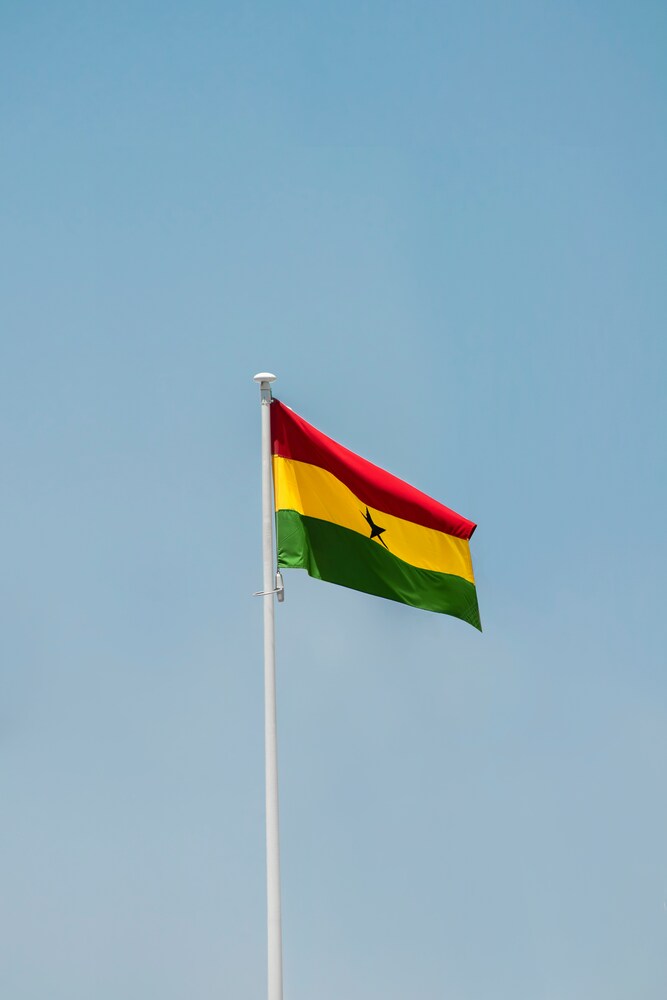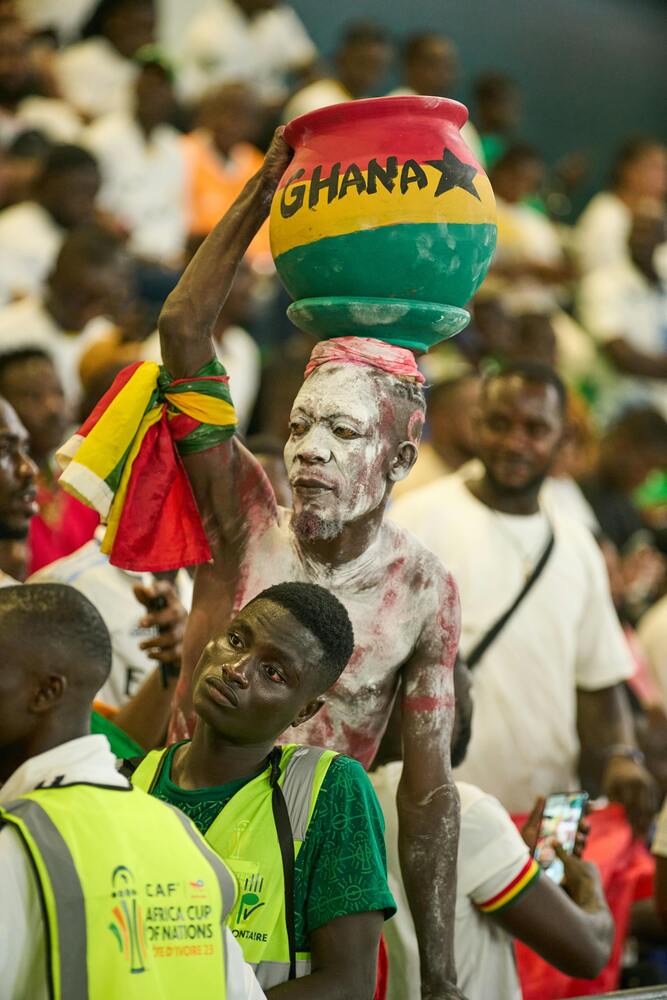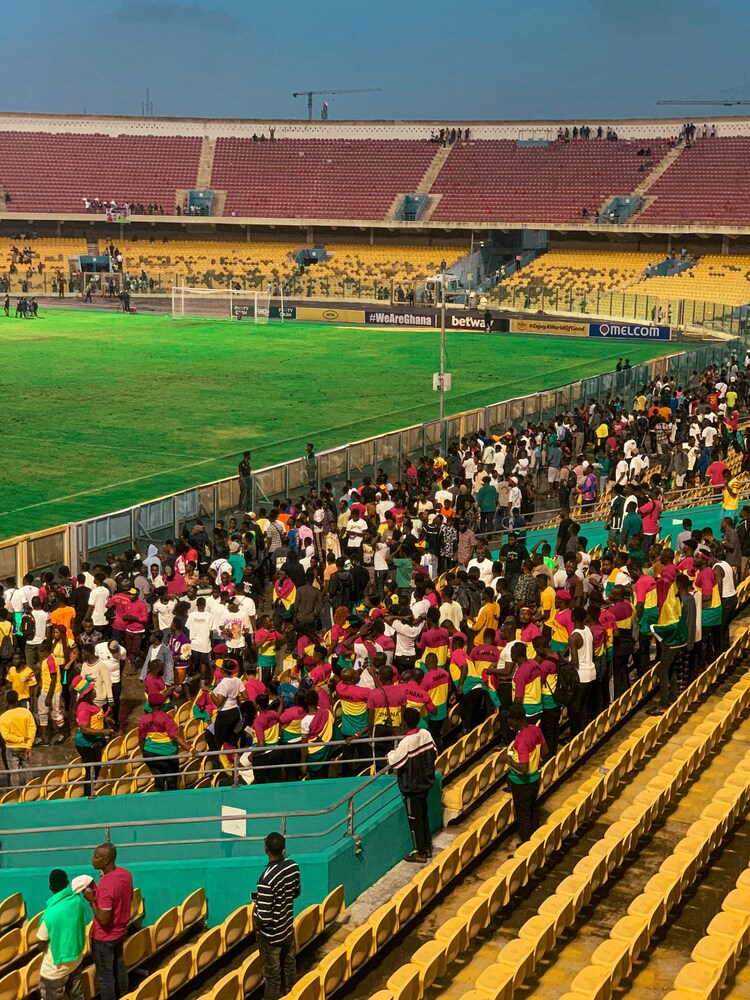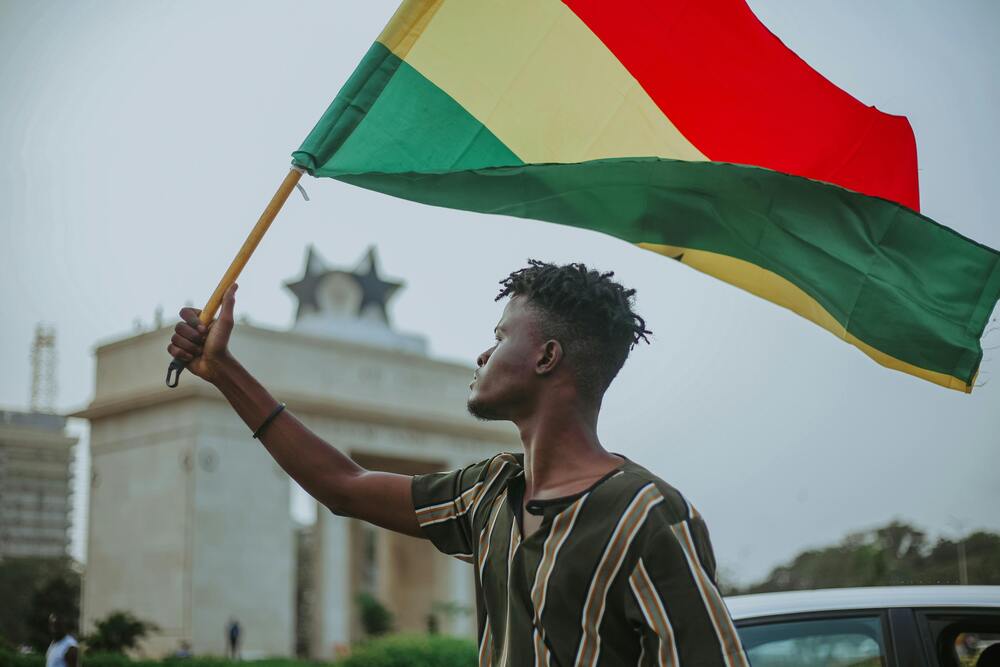The flag of Ghana tells the story of the country’s fight for freedom, its rich resources, and its culture. It embodies the spirit of a nation that dared to lead Africa into a new era of independence. Adopted at the dawn of freedom in 1957, it was the first to use the Pan-African colours in a post-colonial world.
Table of Contents

When was the flag of Ghana adopted?
The flag of Ghana was officially adopted on March 6, 1957, coinciding with the country’s independence from British colonial rule. This historic moment marked Ghana as the first sub-Saharan African nation to achieve independence, inspiring other African nations to follow suit. The adoption of the flag was part of Ghana’s efforts to establish its identity as a free and sovereign state, distinct from its colonial past. We’ll explore this incredible history on our Ghana Gold Coast Tour.
Who designed the Ghana flag?
The flag of Ghana was designed by Theodosia Okoh, an accomplished artist and teacher whose creative vision helped shape the nation’s identity. Her design was chosen for its simplicity and profound symbolism. Theodosia Okoh’s contributions to the nation’s heritage remain celebrated and go beyond the flag. She was also deeply involved in community life. She was an avid sports enthusiast and played a key role in developing hockey in Ghana, earning recognition as the “Mother of Ghana Hockey.” A stadium in Accra was even named in her honor.




What does the flag of Ghana mean?
Every element of the Ghanaian flag has a specific meaning. The flag consists of three horizontal stripes -red, yellow (gold), and green – with a black five-pointed star in the center. The Ghanaian flag was the second African flag after the flag of the Ethiopian Empire to feature these colours. Here’s the meaning of its components:
- Red Stripe: The red stripe symbolizes the blood shed by Ghana’s freedom fighters in their struggle for independence. It honors those who sacrificed their lives to secure the nation’s sovereignty.
- Yellow (Gold) Stripe: The yellow stripe represents Ghana’s abundant natural resources, particularly its gold. Gold has played a significant role in the country’s history, earning the region the name “Gold Coast” during the colonial era.
- Green Stripe: The green stripe reflects the country’s lush vegetation, fertile lands, and the importance of agriculture to its economy and way of life.
- Black Star: The black five-pointed star, placed in the center of the yellow stripe, symbolizes African freedom and unity. It was inspired by the Black Star Line, a shipping line established by Pan-African leader Marcus Garvey to promote economic empowerment and solidarity among people of African descent. Today, the black star serves as a beacon of hope for African liberation and unity.
How has the flag of Ghana influenced other African nations?
The Ghanaian flag, with its use of the Pan-African colors – red, yellow, green, and black – has inspired several other African nations in designing their national flags. These colors, which symbolize the shared struggles, wealth, and hope of the African continent, have become emblematic across Africa. Countries like Guinea, Cameroon, and Ethiopia have similarly embraced these colors in their flags, though Ghana’s design stands out for its central black star, a direct nod to Pan-African unity and leadership.
Ghana’s pioneering adoption of the Pan-African colors in 1957 also encouraged newly independent African states to incorporate elements of solidarity and pride in their flag designs. The central black star remains uniquely Ghanaian, representing a unifying vision that has resonated beyond its borders.
How can I see the flag of Ghana?
The flag of Ghana is visible throughout the country, from urban centers to remote rural areas. On our Ghana Gold Coast Tour, you’ll be able to see the flag:
- Independence Arch and Black Star Gate in Accra: These iconic landmarks in the capital city proudly display the Ghanaian flag and are must-visit sites for tourists.
- Independence Day Celebrations: If you’re in Ghana on March 6, you’ll witness the flag prominently displayed during parades, cultural performances, and ceremonies. The Independence Day parade in Accra is a particularly grand event.
- Educational Institutions: Schools and universities often hoist the flag during morning assemblies or special events.
- Sporting Venues: Attend a football match involving the Ghanaian national team, the Black Stars, and you’ll see fans waving the flag with immense enthusiasm.
- Local Markets and Streets: In Ghana, it’s common to see the flag used in decorations at shops, taxis, and roadside stalls, reflecting the everyday patriotism of the people.

Visit Ghana to experience its spirit and heritage
To fully appreciate the significance of the Ghanaian flag, there’s no better way than to immerse yourself in the country’s history, notably by eploring the castles and forts along the Gold Coast.
On our new and exclusive YPT Ghana trip, following our Benin and Togo Voodoo Trails Adventure, you will discover the legacy of Ghana’s Gold Coast, shaped by colonial powers and the dramatic transatlantic slave trade. It also focuses on the diverse ecosystem of the country, covered by lush rainforests and untamed wilderness.





